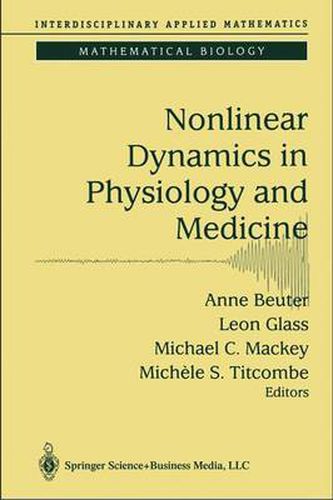Readings Newsletter
Become a Readings Member to make your shopping experience even easier.
Sign in or sign up for free!
You’re not far away from qualifying for FREE standard shipping within Australia
You’ve qualified for FREE standard shipping within Australia
The cart is loading…






This title is printed to order. This book may have been self-published. If so, we cannot guarantee the quality of the content. In the main most books will have gone through the editing process however some may not. We therefore suggest that you be aware of this before ordering this book. If in doubt check either the author or publisher’s details as we are unable to accept any returns unless they are faulty. Please contact us if you have any questions.
This book deals with the application of mathematics in modeling and understanding physiological systems, especially those involving rhythms. It is divided roughly into two sections. In the first part of the book, the authors introduce ideas and techniques from nonlinear dynamics that are relevant to the analysis of biological rhythms. The second part consists of five in-depth case studies in which the authors use the theoretical tools developed earlier to investigate a number of physiological processes: the dynamics of excitable nerve and cardiac tissue, resetting and entrainment of biological oscillators, the effects of noise and time delay on the pupil light reflex, pathologies associated with blood cell replication, and Parkinsonian tremor. One novel feature of the book is the inclusion of classroom-tested computer exercises throughout, designed to form a bridge between the mathematical theory and physiological experiments. This book will be of interest to students and researchers in the natural and physical sciences wanting to learn about the complexities and subtleties of physiological systems from a mathematical perspective. The authors are members of the Centre for Nonlinear Dynamics in Physiology and Medicine. The material in this book was developed for use in courses and was presented in three Summer Schools run by the authors in Montreal.
$9.00 standard shipping within Australia
FREE standard shipping within Australia for orders over $100.00
Express & International shipping calculated at checkout
This title is printed to order. This book may have been self-published. If so, we cannot guarantee the quality of the content. In the main most books will have gone through the editing process however some may not. We therefore suggest that you be aware of this before ordering this book. If in doubt check either the author or publisher’s details as we are unable to accept any returns unless they are faulty. Please contact us if you have any questions.
This book deals with the application of mathematics in modeling and understanding physiological systems, especially those involving rhythms. It is divided roughly into two sections. In the first part of the book, the authors introduce ideas and techniques from nonlinear dynamics that are relevant to the analysis of biological rhythms. The second part consists of five in-depth case studies in which the authors use the theoretical tools developed earlier to investigate a number of physiological processes: the dynamics of excitable nerve and cardiac tissue, resetting and entrainment of biological oscillators, the effects of noise and time delay on the pupil light reflex, pathologies associated with blood cell replication, and Parkinsonian tremor. One novel feature of the book is the inclusion of classroom-tested computer exercises throughout, designed to form a bridge between the mathematical theory and physiological experiments. This book will be of interest to students and researchers in the natural and physical sciences wanting to learn about the complexities and subtleties of physiological systems from a mathematical perspective. The authors are members of the Centre for Nonlinear Dynamics in Physiology and Medicine. The material in this book was developed for use in courses and was presented in three Summer Schools run by the authors in Montreal.